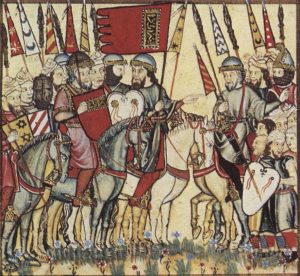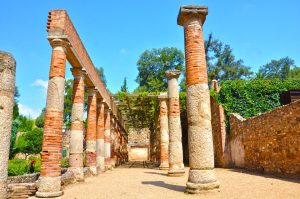Introduction
Before attempting to formulate a system for the study, acquisition and coordinated use of the sounds of Spanish, it is very important for us to realize that listening, speaking, reading, and writing, are systems of communication that work by social agreement. In other words, an entire social group has considered and adopted certain groups of sounds and symbols to represent the meanings that allow its members to communicate from the simplest everyday thoughts, feelings and ideas to the most complex and intricate situations and philosophical rationalizations of the human spirit.
Now, this is where time comes into the scene. History has certainly played a very important role in the evolution of all human languages. In fact, it probably has played an important part in the evolution of animal systems of communication as well. Since 2003, Dr. Simon Fisher and Prof. Tony Monaco, geneticists at the University of Oxford in England, have been studying a specific gene -called FOXP2- that is apparently the “missing link” between the advent of speech and prior systems of communication. This exciting new discovery will soon provide many new insights about how we humans learn a language.
For the time being, we must continue with what we have at present: The undisputed fact that spoken language can only be useful for communication if there is a collective agreement on the meaning of the spoken words, which in turn are sequences of uttered sounds. And written language can only be useful for spoken communication when there is an implicit agreement on both the sound value of each of the written symbols and the intonations that should be given to the sequences as a whole.
In the specific case of Spanish, this is a system that evolved from a series of historical events that should not be ignored when approaching the challenges implicated in teaching its writing and pronunciation. The following is a brief summary of these occurrences:
- From its very beginning, Spanish was the result of hybridising of tongues coming together as a result of a few wars and peace treaties.
- The language we know today is derived from a dialect of spoken Latin brought to the Iberian Peninsula by the Romans after their occupation of that territory at the end of the 3d Century B.C. – (They called the land Hispania). This dialect was called Vulgate Latin and was spoken by the lower classes in Rome since the time of Julius Cesar.
- Spanish is one of the “Romance” languages (also known as Neo-Latin languages). Italian is the closest language to Latin. Spanish follows and then Romanian and Portuguese. The most divergent but still following many of the characteristics of Vulgate Latin, is French.
- In the fourth century, during the fall of the Roman Empire, the Visigoths, a Germanic Group, conquered areas of the Iberian Peninsula. These tribes spoke Latin.
-

Muhammad I of Granada leading his troops during the Mudéjar revolt of 1264–1266, illustrated in the contemporary Cantigas de Santa Maria. Alfonso X in the Public Domain Then, in the Middle Ages, Muslim Moorish conquerors arrived in the peninsula and radically transformed the entire territory. Called Al-Andalus (At it’s greatest expansion, the Islamic states controlled modern day Portugal and most of Spain. This conquest lasted from 711 to 1492.
- The last stronghold of the Arab Empire was the Emirate of Granada (1238-1492). The Christian kingdoms from the North gradually reconquered the Peninsula.
- Hispano-Romance dialects borrowed hundreds of words from the Arabic. In the process of reconquering the Peninsula, the nuances of these dialects slowly displaced the net Arabic and embraced the higher forms of Latin. Celts and Iberians mixed with the local commoners and the language began taking its own unique “flavor”.
- Then came a strong wave of Castilian influence that, given the increasing power of that Kingdom, set the very first forms of Castilian or Castellano. This is the purest form of the language, and is the one that then expanded throughout the Modern Period of Spanish in the wake of the conquests of the Empire in the Americas.
A second important consideration is that behind each and every one of the written symbols of Spanish there is a history, a social and political circumstance, and a specific sound. Phonemes are elements of human Speech. They can only be heard. They cannot be read. Phonemes are units of sound. And their importance is absolute. The reason is simple: The typical phonemes of a given language are the elements that carry the distinctive sound image of that particular language.
Why is this so important? Because the simple, practical, and recurrent truth is that when learning a second language, those sounds that we cannot utter will not be encoded by our brain and, consequently, when we hear them in context, we will not listen to them. These sounds that we can’t hear are the ones that keep us from perceiving the acoustic image of the language. One of the difficulties in teaching English phonics is precisely that there is no visual or “chalkboard value” for these units of sound. What we show our students in overhead projectors, hand-outs and boards are GRAPHEMES, the symbols that represent such phonemes. That is why we must now introduce a new system. One that will act as a bridge so our students can cross from the pasture of the written form to that other grazing land of sounded form.
Before I go on, allow me to insist that the one single most important challenge a language learner faces is the fact that those sounds that one cannot pronounce, one will not be able to hear…and those sounds that one cannot hear, one will not be able to pronounce.
New evidence from recent neurological findings and linguistic research suggests that exposure to the unfamiliar sounds of an unknown language is registered initially by the brain in the same way it would if it were noise: undifferentiated neural activity in reaction to un-encoded sound. Fred Genesee commenting on the findings at the Center for Research on Education Diversity and Excellence Santa Cruz CA. and the ERIC Clearinghouse on Languages and Linguistics, Washington DC, said, “Neural activity is diffused, because the brain has not learned the acoustic patterns that distinguish one sound from another. As exposure continues, the listener (and the brain) learns to differentiate among different sounds and even among short sequences of sounds that correspond to words or parts of words. Neural connections that reflect this learning process are formed in the auditory (temporal) cortex of the left hemisphere for most individuals. With further exposure, both the simple and complex circuits (corresponding to simple sounds and sequences of sounds) are activated at virtually the same time and more easily.”
In the first levels of second language acquisition, the neural circuits that receive input from multiple external sources are activated in a weak, piecemeal, disorderly fashion. Acoustic perception is not clear enough to promote adequate reactions. Visual perception of phonetic elements doesn’t seem to trigger recognition of the corresponding sound patterns. It’s like receiving a very blurry and distorted satellite image from an unidentified source. Lots of information is flowing in at incredible speeds, but there is no way to decode, analyze and interpret a large percentage of the input. So, priceless facts are lost and precious time is spent in trying to retrieve the true picture of the transmission. With experience, practice and repetition of certain key elements, the brain will be able to encode key information with which it can then trigger instant recognition of the individual elements it needs to process an accurate perception of the entire message.
In my experience as a teacher, I have been able to observe that our students achieve significant results when they are provided with tools that help them initially to hear and then to sound the typical acoustic “images” of Spanish words. Once their brain is given the necessary information to encode these bits of sound, they will be prepared to decode their presence in contextual situations. Fred Genesee said, “What are the implications of these findings for teaching? First, effective teaching should include a focus on both parts and wholes. Instructional approaches that advocate teaching parts and not wholes or wholes and not parts are misguided, because the brain naturally links local neural activity to circuits that are related to different experiential domains.”
![]()
The sole purpose of this workbook, then, is to provide a first consistent encode-decode bridging tool for learners of Spanish as a second language. We wish you many hours of fine-tuning pleasure with these exercises and a fresh new “audition” of the Spanish Tongue.


